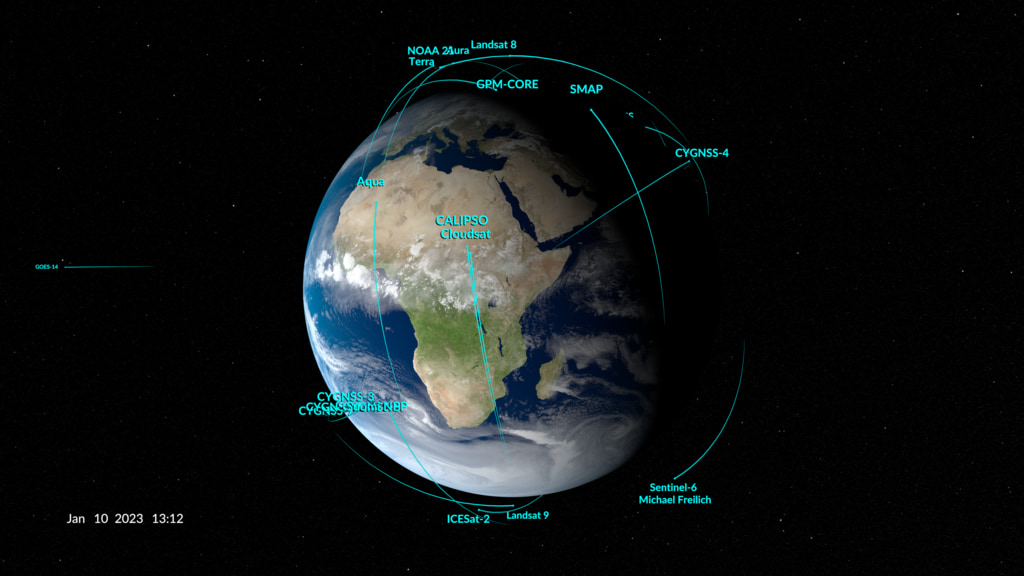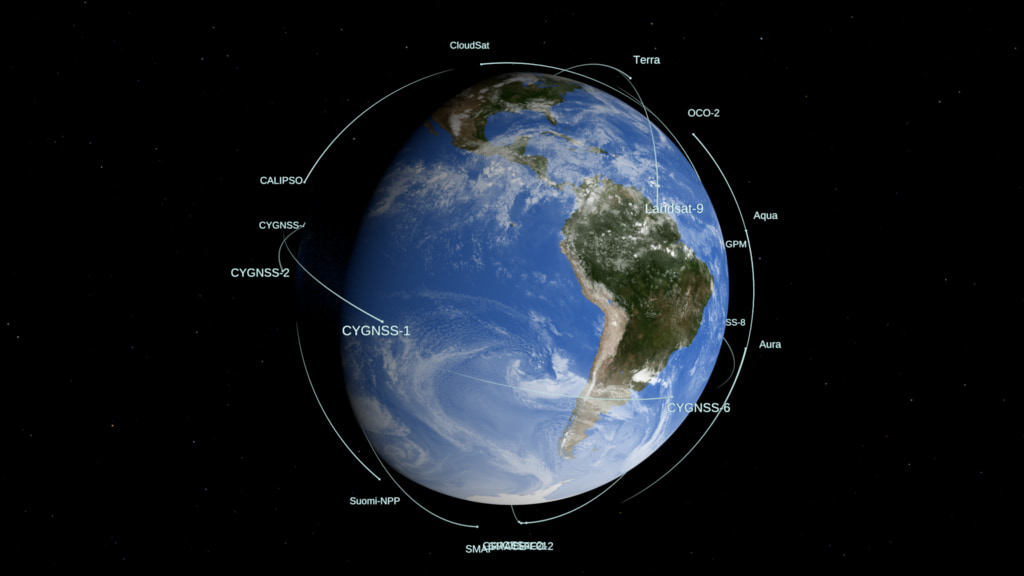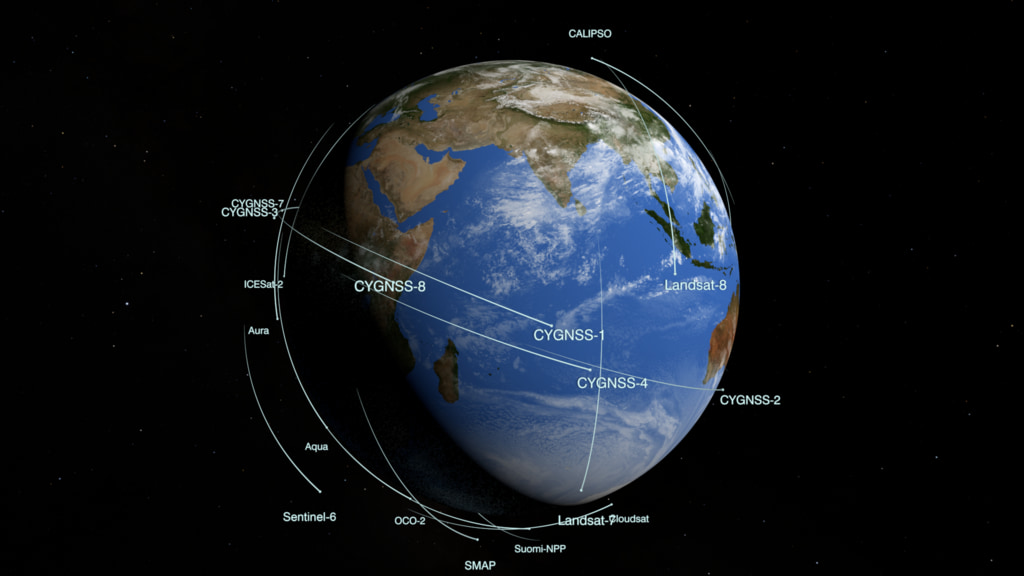A newer version of this visualization is available.
NASA's Orbiting Earth Observing Fleet (Improved Background)
NASA's Earth Observing fleet of vehicles constitutes a major milestone in the history of Earth science, facilitating the kinds of wide scale and synergistic research endeavors that until the last decade have been impossible to even consider. Many of the techniques being employed around Earth are a direct offshoot of technological and scientific techniques developed on missions to other worlds. NASA's continued commitment to primary research about our home remains a top priority not only to the agency, but to the nation, and the world as a whole. This visualization shows the spacecraft in NASA's Earth Observing fleet. The relative altitudes, speeds, and sun position are correct for 12-01-2003 starting at 5:00 UTC. Aura was added as it would have appeared in orbit had it already been launched at that time. This is an HD version that uses an earth with clouds.
NASA's Earth Observing Fleet

NASA's Earth Observing Fleet
Credits
Please give credit for this item to:
NASA/Goddard Space Flight Center Scientific Visualization Studio
-
Animators
- Greg Shirah (NASA/GSFC)
- Tom Bridgman (Global Science and Technology, Inc.)
- Alex Kekesi (Global Science and Technology, Inc.)
- Marte Newcombe (Global Science and Technology, Inc.)
Release date
This page was originally published on Friday, September 9, 2005.
This page was last updated on Wednesday, May 3, 2023 at 1:56 PM EDT.
Missions
This page is related to the following missions:Series
This page can be found in the following series:Datasets used
-
Blue Marble [Aqua: MODIS]
ID: 252Credit: The Blue Marble data is courtesy of Reto Stockli (NASA/GSFC).
See all pages that use this dataset -
CelesTrak Spacecraft Orbit Ephemeris
ID: 454This dataset can be found at: http://celestrak.com
See all pages that use this dataset -
Blue Marble [Terra: MODIS]
ID: 492Credit: The Blue Marble data is courtesy of Reto Stockli (NASA/GSFC).
See all pages that use this dataset
Note: While we identify the data sets used on this page, we do not store any further details, nor the data sets themselves on our site.


